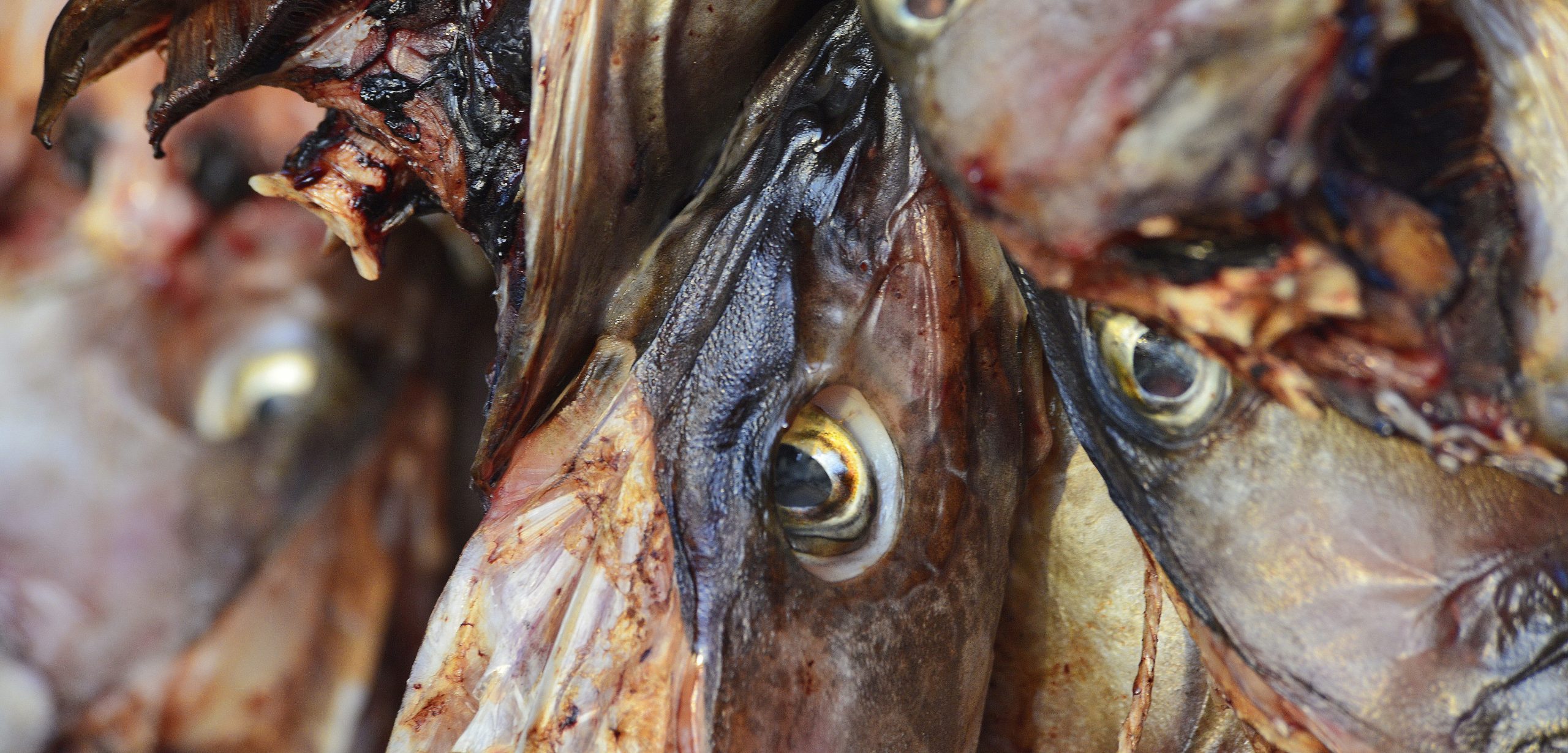Feeding the World, One Fish Head at a Time
Entrepreneurs and governments are trying to make use of the whole fish.
Article body copy
Along much of the Alaskan coast, in port towns like Homer, Dutch Harbor, and Ketchikan, shiploads of cod, halibut, and salmon arrive almost daily. On shore, workers carve and collect the valuable fillets, while the fishes’ frames—the heads and bones—are pumped through large pipes back to sea.
“They do this like every afternoon in Homer,” says Frank Allen, an entrepreneurial businessman in the fishing industry. But these frames are often thick with bits of meat, oil, and cartilage. “It creates oil slicks so big you can’t even see the end of them,” he says.
“They just grind it up and pump it into the sea,” says Allen, who notes that protein shortages loom in impoverished regions around the world.
In the United States, nearly half of the edible seafood supply is lost or wasted before it is eaten, according to a report by the Johns Hopkins Center for a Livable Future. But that assessment excludes heads and frames as part of the waste—an intentional (and telling) omission by the report’s authors. Fish waste is a huge problem.
Allen—a 44-year-old fast-talking, high energy American—has a peculiar business dream: to feed the world with the cast-off scraps from commercial fisheries.
He began his quest in 2007. Based in Astoria, Oregon, Allen took to the road, spending the next several years crisscrossing the Pacific Ocean. He visited with dock managers, fishermen, and seafood wholesalers in Alaska to discuss a potential market for their daily discards while making forays to East Asia seeking buyers. He would carry an insulated suitcase filled with frozen Pacific cod heads, and the meaty collar sections from behind the gill plates. He gave staged presentations to seafood buyers, and sat down with chefs and vendors.
East Asians eat nearly all parts of their fish, and over bowls of cod head soup, Allen cut deals. Today, Allen’s company, Live Online Seafood, diverts about five tonnes of fish byproducts daily from the sea to customers in China, Japan, South Korea, and the Philippines. Heads make up the bulk of the material, though the company also ships collars, roe (eggs), milt (sperm sacs), and stomachs.
Now, Allen has his eye on Central Africa, where starvation is a serious threat to millions. Allen says he envisions drying, salting, and macerating fish to distribute it in a landscape largely lacking in refrigeration infrastructure. “These would be like protein survival bars,” he says. “Something that’s stable in the heat.”
As the world population grows, there should be no seafood byproducts. Rather, it should become standard to use the whole fish, says Jogeir Toppe, a fishery industry officer with the United Nations’ Food and Agriculture Organization (FAO). To achieve this goal, he says, the public and world leaders must recognize that today’s fish byproducts are, in some ways, the superior cuts of the fish.
“When we process fish we’re usually throwing out the parts that are full of micronutrients,” says Toppe.
Allen is not the only one marketing fishing industry byproducts.
Already in Africa, FAO supports a program to render whole fish, including Nile perch and tilapia, into a nutritious powder. Toppe says the pulverized fish, which is rich in micronutrients, oil, and protein, has been blended into school meals in Ugandan villages. Commercially distributed root and grain flours have also been cut with the powder.
In Ghana and Ecuador, tuna frames are also being dried and ground. And in Chile there is a growing market for the softened, canned frames of farmed salmon.
Back in Alaska, the fish byproduct industry is growing, says Tyson Fick, communications director for the Alaska Seafood Marketing Institute. “The landscape is changing rapidly, and there is less waste now than ever before.”
Aside from Allen’s export business, a separate company, Tidal Vision, creates wallets and cell phone cases out of wild salmon “leather.”
“Every processor I talk to tells me their goal is 100-percent utilization, because it makes good economic and biological sense,” says Fick.
The change has been a little slow for Allen, but he believes the day is coming when fish carcasses, bones, and innards will become universally sought-after commodities.
“There was a time when most of the cow was discarded,” he says, looking at the past to predict the future.
Now, once-unpopular cow parts find their way into all sorts of products and food, most notably ground beef.
And in fact, says Fick, a similar transformation is affecting the Alaskan salmon industry: “Every salmon processor with a fillet line also has a scraping station where they are harvesting the meat left on the frame after filleting for use in products like the now-ubiquitous Costco salmon burger.”

